Understanding Virtual Reality: A Comprehensive Overview
Virtual Reality is transforming real estate by offering immersive 3D property tours far beyond the limits of static images. With a VR headset, buyers can walk through homes, whether fully built or under construction, feeling as if they’re physically present. This technology is rapidly being embraced across industries, including real estate, where it enables virtual walkthroughs, detailed plan evaluations, and realistic interior visualisations without needing in-person visits. As efficiency in buying and selling becomes integral, brokers, developers and buyers must recognise the power of VR. PropVR is at the forefront, offering experiences bringing homeownership closer than ever.
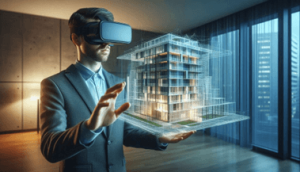
How Virtual Reality is Changing Various Industries
VR is reshaping industries beyond real estate, revolutionising experiences and operational efficiency. The gaming industry, for example, has evolved from traditional screen-based play to immersive experiences. Similarly, VR has entered the educational and training sectors, offering students and professionals more interactive and hands-on learning environments.
VR has revolutionized real estate by simplifying property showcases, making it easier to highlight features while saving time for both buyers and agents. Traditional marketing patterns in the real estate business have significantly improved. Streamlined design processes now allow developers to visualize projects before construction begins. At PropVR, we integrate cutting-edge Proptech with VR technology.. Our platform allows VR to present immersive property experiences that generate heightened buyer activity and streamline transactions.
The Technology Behind Virtual Reality: Hardware and Software
VR relies on a combination of advanced hardware and software. VR headsets enable buyers to visualise the project model in an immersive virtual environment. Some popular VR headsets include Meta Quest and HTC Vive. These headsets are supremely functional and comes with tracking head movements to provide a seamless visual experience from every angle
Additionally, it utilises 3D modelling software, like Autodesk Revit and SketchUp, to help develop in-depth building representations virtually. Usually, architects and builders visualise upcoming projects using this method and make necessary property modifications even before work begins. Then comes 360-degree cameras that help capture real-life characters and enable the experiences in VR while walkthroughs are done on the property. A combination of real-time and 3D helps present the real estate project in an accurate and immersive format. At PropVR, we harness this technology to make property searches more immersive and exciting. With our PropTech capabilities, we can create real-time solutions that adapt to real estate needs.
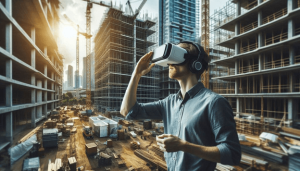
Virtual Reality in Property Exploration and the Proptech Industry
VR is reshaping PropTech marketing by moving beyond static images and 2D visualizations. Instead of relying on imagination, buyers can now explore properties virtually—saving time, skipping physical visits, and viewing multiple listings from the comfort of their home or sales office. This seamless experience benefits both buyers and sellers.
At PropVR, we harness the power of VR to elevate real estate marketing and sales. Our immersive virtual tours let buyers step inside properties, experiencing rooms and features in a way photos simply can’t capture.
More than just convenience, VR empowers buyers to make faster, more informed decisions. They can compare options, explore spaces in real time, and gain a clear sense of what they’re investing in, boosting trust and confidence in both the builder and the process.
By combining VR with property discovery, we create interactive and transparent experiences. Buyers stay engaged, get instant answers, and access real-time information—making their home-buying journey more connected, informed, and rewarding.
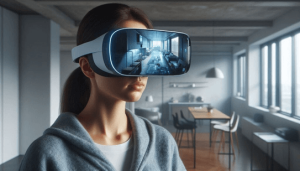
Virtual Reality in Gaming and Beyond
As the future of PropTech comes into focus, gamification ideas become increasingly relevant. PropVR enhances buying experiences through gaming-inspired elements in property discovery. In its function, PropVR generates immersive and interactive virtual property tours through which buyers can receive incentives for completing specific actions, such as visiting a variety of listings or providing feedback.
At the same time, a gamified platform is making finding properties more fun. This strategy enables buyers to actively participate in their search and build a stronger connection with potential homes. Combining gaming elements with real estate helps buyers engage more with listings, making their decisions more informed and rewarding. As the PropTech industry evolves, gamification is gaining momentum. PropVR uses gaming elements to enhance user experience and simplify real estate searches, offering rewards for actions like reading messages or posting comments during virtual tours.
Gamifying property browsing makes buyers more engaged, helping them better understand the properties they’re considering. PropVR bridges gaming and real estate, transforming how consumers explore homes and empowering them to make informed decisions.
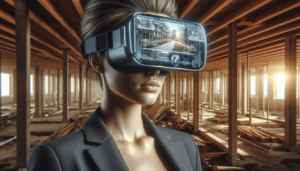
The Future of Virtual Reality: Trends and Innovations
As technology continues to advance, the increasing potential of virtual reality in real estate looks very promising. Some emerging trends include:
Augmented Reality Integration: Combines virtual and real-world elements, letting buyers visualize furnished spaces during virtual tours.
Virtual Assistants: Next-gen VR may feature AI assistants to answer questions and offer personalized recommendations.
Increased Accessibility: Lowers costs, enabling real estate businesses to offer immersive tours more frequently to a wider audience.
PropVR is actively embracing these advancements, striving to seamlessly integrate them into our service portfolio.
Challenges and Limitations of Virtual Reality
Along with the benefits, there are certain challenges. Key Challenges include:
Implementation Cost: Integrating VR in real estate requires advanced technology and expertise, which can be costly for many businesses.
User Adaptation: High costs are compounded by the need for user training, as not everyone is familiar with virtual reality tools and environments.
Technical Limitations: Additionally, access to high-performance VR equipment, like headsets, remains limited, restricting the reach and impact of virtual experiences.
Overcoming barriers is key to leveraging VR in real estate. PropVR tackles this by offering affordable solutions and training tools, helping buyers and sellers fully harness VR technology.
How Virtual Reality is Shaping Social Interactions
VR technology is transforming human interaction and communication, unlocking new ways for people to connect and collaborate. In real estate, it allows professionals to meet potential buyers in virtual spaces, showcase properties, and address queries in real time—regardless of location. This creates more engaging, personalised experiences while saving time. By making property dealings immersive and dynamic, VR can redefine how real estate is experienced and negotiated.
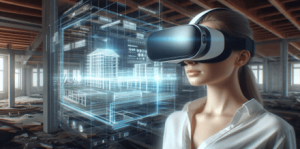
Exploring the Potential of VR in Business and Work Environments
Virtual reality has proved to have a considerable impact on formal workplaces. A lot of businesses use virtual reality (VR) technology for training. These days, VR technology is also used for team building and collaboration, making a significant impact. Businesses use VR to train employees through virtual scenarios simulating real-world challenges. In real estate, this includes training agents in negotiation and property walkthroughs. As VR becomes more prevalent in other industries, its significance in real estate operations will expand. This extension will explain how firms may adequately use this new instrument for success. Leading this initiative is PropVR, which offers customised VR solutions that let real estate agents flourish in their positions while adapting to the evolving PropTech market.
Conclusion
Virtual Reality can potentially revolutionise the real estate sector by providing solutions that meet buyers’ expectations and improve their overall experiences. It is also likely to influence the sales and marketing of real estate streaming transactions. As PropTech evolves, embracing VR technology becomes an indispensable tool for real estate due to market rivalry and an increasingly digital environment. Stakeholders may utilise VR to create realistic, engaging experiences that meet the expectations of today’s tech-savvy customers by understanding the technology’s role in real estate and implementation. Virtual real estate is the future, and those who profit from it will set the pace.
FAQ
What technology is used in the virtual reality world?
Virtual reality utilises VR headsets, 3D modelling software, and motion-tracking devices to create immersive environments.
What are some examples of virtual reality in everyday life?
Examples include VR gaming, virtual travel experiences, remote meetings, and immersive training simulations.
What are the main applications of virtual reality?
Main applications include entertainment, education, healthcare training, real estate visualisation, and therapy.
How does VR impact various industries?
VR enhances customer engagement, improves training effectiveness, streamlines design processes, and facilitates remote collaboration across industries.
What are the future trends in virtual reality?
Future trends include increased accessibility, integration with augmented reality, advancements in haptic feedback, and the rise of social VR experiences.
